
Cascale, Worldly Host Climate Event, Mark Decarbonization Steps
The organizations co-hosted a New York Climate Week Event with many fantastic speakers and insights. Read more here!
Aligned organizations Cascale and Worldly held a first-ever joint event during New York Climate Week. Cascale (formerly the Sustainable Apparel Coalition) is the global nonprofit alliance for the consumer goods industry; Worldly is the exclusive platform for Cascale’s Higg Index and the most comprehensive sustainability data and insights platform.

Aligned organizations Cascale and Worldly held a first-ever joint event during New York Climate Week. Cascale (formerly the Sustainable Apparel Coalition) is the global nonprofit alliance for the consumer goods industry; Worldly is the exclusive platform for Cascale’s Higg Index and the most comprehensive sustainability data and insights platform.
At the co-hosted “Chatting Climate & Consumer Goods” event held in New York City’s Garment District, speakers and attendees delivered deep supply chain decarbonization insights, building on presentations at the Cascale Annual Meeting and Worldly Customer Forum in Munich earlier this month. Attendees included Cascale members PVH, Patagonia, Lululemon, The Children’s Place, as well as guests including LVMH, among others. Hosts and speakers offered expertise on decarbonization, identifying improvements in supplier engagement, and setting science-based targets.
Colin Browne, CEO, Cascale; Scott Raskin, CEO, Worldly; and Tamar Hoek, Cascale Board Chair and senior policy director sustainable fashion, Solidaridad began the event with a call to action. “You only get so far with voluntary actions,” Browne said, outlining how sustainability regulation will change our workforce and become an imperative, while Raskin invited the audience to challenge the discussions adding, “Let’s not have the same conversations.” “If we really want to have a good future for future generations, then we have to save planet earth,” Hoek said, conveying hope but acknowledging the “long road ahead.”
In the first session, Lewis Perkins, president and CEO, Apparel Impact Institute, joined the stage alongside Browne for a conversation on “Scaling Decarbonization.” The executives discussed the collaborative work between Aii and Cascale and how the organizations are aligning on critical solutions and financing strategies. “Going forward, carbon is going to be an important metric.” Browne said of optimized sourcing strategies. “We need to do less to do more.”
Perkins outlined four components of the “Industry Decarbonization Roadmap,” or IDR, as well as Aii’s $250 million-dollar Fashion Climate Fund and interlinked Climate Solutions Portfolio. IDR is a roadmap for companies operating in regions where greenhouse gas emissions are highest to map, identify, and act. He then shared four key components to the IDR, which include a standardized technical methodology, development of a facility carbon benchmark, funding and financing, and engagement and commitment. “I’m not here to push debt on any suppliers,” he said, stressing that the “holy grail” for brands and retailers should be long-term partnership agreements. Perkins mentioned The Future Supplier Initiative, which aims to reduce the financial burden for suppliers by working in unity with fashion brands to lower costs.
Next, in a special pre-recorded session, “Manufacturer Message: Live from Jakarta,” Sunil Shewakramani, CEO Busana Apparel Group, and Andrew Martin, executive vice president of Cascale, discussed the synergy between brands and suppliers and the moral imperative to do right by people and planet. Shewakramani said doing good is a “competitive advantage” in terms of how the 49-year-old business looks at green investments. Busana Apparel Group ranks among the largest garment manufacturers and exporters globally, with 24 global facilities and a number of Leed Certifications from the Green Building Council. Martin emphasized Cascale’s intent to elevate manufacturers’ voices, to which Shewakramani added: “The whole thing needs to change from ‘I’ to ‘we.’”
After a networking break, Cascale’s director of Higg Transparency, Chris Marshall, joined the stage to moderate the panel “Climate Engagement and Action in Tier 2.” Speakers included Jimmy Summers, vice president – EHS/sustainability at Elevate Textiles, Inc.; Xiaofei Li, senior manager, material sustainability and transparency at Eileen Fisher; and Stefanie Kato, Worldly associate director of accounts.
“The thing that does motivate us is business — across the board,” said Summers. “One of the promises was that [the Higg Index] would reduce the number of audits — and promise delivered. We went from 12 audits at a facility to maybe three.” Kato spoke of the ways Worldly is match-making brands with suppliers in the same network, so data points are aligned, and. stressed the need for quicker frequency in data. Finally, Li shared how Eileen Fisher is approaching the Tier 2 decarbonization journey. “We worked very hard to have our suppliers adopt Higg FEM. To incentivize that we incorporated Higg FEM in our Tier 1 scorecard and Tier 2 mill scorecard,” she said, confirming the importance of supporting suppliers with expertise and financing.
In a final session, “Transparency In Action,” Worldly’s Scott Raskin and Natalie Grillon, CEO of Open Supply Hub, explored the potential for data harmonization in facilities. The organizations are in close collaboration offering an API integration for the data.
As moderator, Raskin explored several critical themes during the discussion. He began by asking Grillon to outline the latest developments at Open Supply Hub (OSH), seeking insight into its current priorities and areas of exciting progress. This set the stage for a deeper exploration of industry trends, particularly the movement toward data harmonization within the consumer goods sector, highlighting the growing importance of integrated and standardized data. He also delved into how the adoption of OSH by multi-stakeholder initiatives (MSIs) improves collaboration across supply chains, reflecting his interest in how these partnerships can strengthen supply chain relationships and shared goals. He reinforced that transparency in data is Worldly’s mission.
Grillon gave a recap of her career trajectory working in international development with farmers in countries from Uganda to Mali before founding Open Supply Hub in 2019. Since its launch, Open Supply Hub has expanded its mandate into broader consumer goods and now has nearly 500,000 users today across the value chain, with a target of five million by 2026. Through the platform, users can access information on facility names and locations, as well as organizations affiliated with a specific facility, which promotes shared solutions. “The idea behind these initiatives is shared progress,” Grillon said.
Cascale’s co-founder reflects on the organization’s origins and roadmap for future success from the Annual Meeting in Munich.

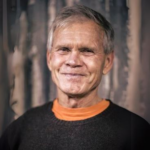
In 2010, a conversation between Patagonia and Walmart sparked an idea that would reshape the sustainability landscape for the apparel and footwear industry.
At the time, I was at Patagonia, working on environmental initiatives, when Walmart approached us for feedback on a supplier scorecard they were developing. It was a basic concept, but it got me thinking—what if we could build a coalition of apparel and footwear companies to develop a robust, industry-wide standard for measuring sustainability? It was a long shot, but we accepted the challenge and we code-named the effort “David and Goliath,” borrowing inspiration from the timeless fight between unmatched strengths. Walmart surprised us—they wanted to be David, and Patagonia would be Goliath.
From the beginning, we knew the initiative needed to go beyond just brands and manufacturers. We aimed to create a multi-stakeholder alliance that included NGOs, governments, academia, and other key players. This inclusive approach was critical to ensuring that the solutions we developed were robust, credible, and widely accepted.
A Mission Rooted in Collaboration and Pragmatism
The founding principles of Cascale were straightforward but ambitious: Build on existing work to move quickly and don’t let perfection stand in the way of progress. With these values in mind, we reached out to CEOs of various companies, NGOs, and universities to establish a universally-accepted approach for measuring sustainability in the apparel sector. This effort quickly gained traction, and the group, originally named the Sustainable Apparel Coalition, grew rapidly.
Our early vision was simple yet ambitious: Create business value by reducing environmental impact and increasing social justice across the value chain. The strategy was also simple yet ambitious: manage impact by measurement that was deep, wide and standardized. To help understand how strategy could lead to vision, we brought in a team of complex systems analysts from the Massachusetts Institute of Technology (MIT) to map out a measurement tool–an index–that, put in the hands of key decision-makers, could incentivize them to make better decisions.
The MIT team gave us a Theory of Change and we built a 1.0 version of the tool. But we needed a name for the tool that could transcend apparel. At the same time, we learned that a group of physicists had discovered a subatomic particle that was going to unify the universe, and they were going to call it the Higgs Boson. I smiled and said, “If the Higgs Boson particle is going to unify the universe, then the Higg Index was going to save it.
Sharing Our Vision in Munich
At Cascale’s recent Annual Meeting in Munich, I had the opportunity to reflect on these early days and share why our founding mission remains as critical today as it was over a decade ago. The challenges we set out to address then—fragmented efforts and outdated practices—are still prevalent. Today, the urgency is even greater. Emissions are on track to be 2.5 times higher than needed by 2030 if we don’t act decisively. Cascale was created to provide a unified solution to these industry-wide challenges, and the need for a coordinated, collective effort is now more important than ever. From its simple spreadsheet origins, the Higg Index has evolved into a critical suite of tools relied on by over 40,000 users to decrease environmental impact and increase social justice unlike any other industry.
The Path Forward: Accountability, Transparency, and Collective Action
One of the key points I shared in Munich was the importance of accountability and transparency—areas where Cascale has made progress but where there is still much work to do. Cascale’s strength lies in its ability to unite diverse perspectives and drive collective action. The Higg Index continues to provide essential data and insights that empower decision-makers across the value chain to make better, more informed choices, but we have to hold the industry to account for its performance..
Looking ahead, Cascale is uniquely positioned to lead the industry towards a more sustainable future – especially in the critical area of decarbonization. By focusing on key areas like eliminating coal, increasing renewable energy use, and improving energy efficiency, and by working closely with partners like the Apparel Impact Institute and RESET Carbon, Cascale is building an Industry Decarbonization Roadmap that supports suppliers in making meaningful reductions.
Why Cascale’s Original Vision Still Matters
Reflecting on our journey, it’s clear that Cascale’s founding principles are just as relevant today. The idea that brought us together remains the guiding force behind every initiative. The potential is enormous, and with the right tools, partnerships, and a commitment to continuous improvement, Cascale stands ready to guide the industry forward.
The Higg Index may not literally save the universe, but it represents our best attempt at saving our one and only home planet.
By embracing initiatives like MCAP, Gap Inc. helps its suppliers set science-aligned targets to significantly reduce GHG emissions and drive meaningful environmental change across the industry.

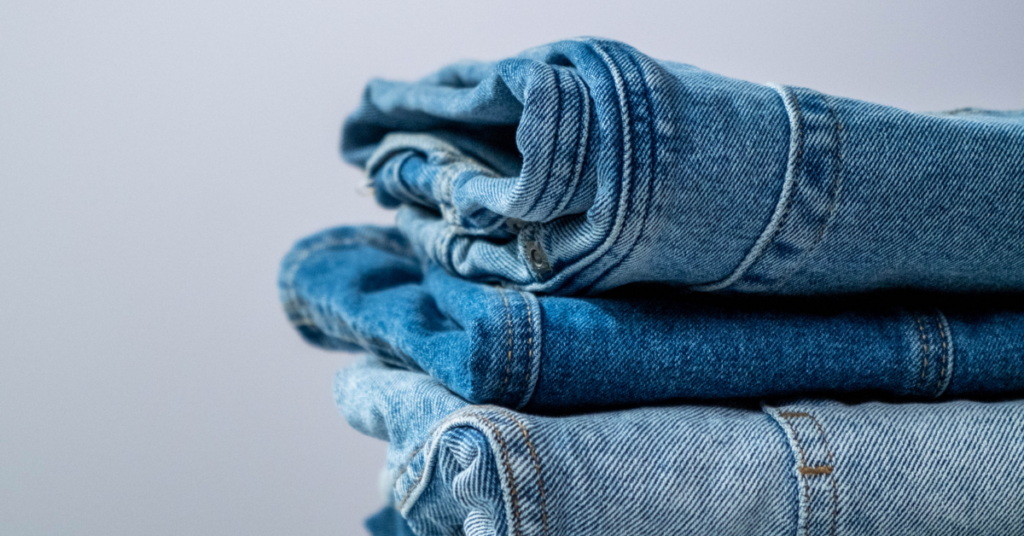
Gap Inc. has pledged to reduce its environmental footprint through innovative initiatives and collaborative efforts, such as Cascale’s Manufacturer Climate Action Program (MCAP), which accelerates the adoption of science-aligned targets (SATs) and fosters a culture of collaborative sustainability within the consumer goods industry.
Gap Inc.’s 2023 ESG Report highlights significant progress toward its sustainability goals, demonstrating the company’s commitment to reducing its environmental impact. The report outlines two major emissions-related targets:
Additionally, Gap Inc. set a goal for 80 percent of its sourcing to be allocated to green-rated factories by 2025. This goal was surpassed in 2023, with 87 percent of business spending allocated to green-rated factories.
These milestones reflect Gap Inc.’s dedication to sustainability and its proactive approach to environmental stewardship across its operations and supply chain.
Central to Gap Inc.’s sustainability strategy is active engagement with suppliers. Recognizing that meaningful change requires collaborative efforts, Gap Inc. coordinated with three key suppliers — Hansae Co Ltd, Makalot Industrial Co Ltd, and Yakjin Trading Corp — to engage in MCAP. After participating in MCAP, the three suppliers completed setting their SATs, and their targets were validated by either TÜV Rheinland, BV, or SGS. The validated targets have been reviewed and approved by Cascale, and their MCAP status will be publicly disclosed on the MCAP Disclosure Dashboard.
MCAP is a pivotal initiative within Cascale’s Decarbonization Program, uniting manufacturers worldwide to combat climate change in the consumer goods industry. MCAP drives sustainable change through science-aligned targets (SATs), aiming for a 45 percent reduction in greenhouse gas emissions by 2030. This effort is aligned with the goal of limiting global temperature increases to 1.5°C above pre-industrial levels.
Gap Inc.’s engagement with its suppliers, MCAP, and the Higg Index tools underscores its commitment to sustainability and climate action. By working closely with suppliers like Hansae, Markalot, and Yakjin, Gap Inc. has achieved significant environmental improvements. These efforts highlight the spirit of collaboration and dedication within the consumer goods industry, showcasing the impactful results of strategic supplier engagement to combat climate change.
Gap Inc.’s Supplier Sustainability program focuses on social and environmental issues. It uses remediation practices and a compliance rating system to incentivize suppliers to implement proper labor, health, safety, and environmental standards. This approach aims to protect and support workers, improve air and water quality, increase energy efficiency, and minimize violations across the supply chain.
Initially, Gap Inc.’s Supplier Sustainability team focused on Tier 1 of the supply chain but is now expanding efforts to Tier 2 and 3 suppliers. They use industry tools like the Social & Labor Convergence Program (SLCP) Converged Assessment Framework and the Higg Index Facility Environmental Module (FEM) to assess and collaborate with suppliers to develop capacity-building and efficiency programs.
Gap, Inc. continues to lead by example, demonstrating that meaningful change is possible when industry leaders and their partners work together toward common goals. By engaging with MCAP and its strategic suppliers and using the Higg Index tools, Gap Inc. has made significant strides in reducing its environmental footprint and fostering a sustainable supply chain. This proactive approach sets a benchmark for others in the industry, contributing to a more sustainable future for all.
Joyce Tsoi, senior director of the Decarbonization Program at Cascale, joined a panel on “Sustainability and Finance in the World of Textiles” at the ITMAconnect Innovator Xchange Virtual Edition last month.

Joyce Tsoi, senior director of the Decarbonization Program at Cascale, joined a panel on “Sustainability and Finance in the World of Textiles” at the ITMAconnect Innovator Xchange Virtual Edition last month.
Moderated by Jeroen Vits, managing director of ITMA Services, Brussels, the panel also included Ryan Gaines, chief financial officer of Apparel Impact Institute, a Cascale partner, and Michael Rattinger, senior climate change specialist at Asian Development Bank.
Designed to offer perspective and insights on the intersection between sustainability and finance in the global textile supply chain, the panelists discussed sustainability requirements set by global brands and retailers and their impact on the global textile supply chain. Participants also shed light on financial instruments for the textile industry to realize its sustainable transformation demanded by many stakeholders.
Tsoi shared that ITMA is well positioned to weigh in on the transformations in the supply chain, a subject on which Cascale and collaborators are increasingly focused. She detailed how Aii and Cascale formed a strategic partnership in 2023 in order to expand impact and scale the collective knowledge base. Then stakeholders can align on funding, decision-making, and ultimately, accelerate action. For Aii, this chiefly involves Fashion Climate Fund and Climate Solutions Portfolio, which is meant to accelerate action and drive emissions reduction. Cascale’s focus is the Decarbonization Program and corresponding science-aligned targets (SATs) adoption, part of Cascale’s growing program base that is guided by the organization’s “Evolution for Impact” strategy.
With more than 300 members worldwide – including brands and retailers, manufacturers, and affiliate members – Tsoi shared that Cascale effectively represents half of the apparel, textiles, and footwear industry, in terms of revenue. She recommended brands and retailers utilize the Higg Index suite of tools and nominate their suppliers to participate in programs to improve energy efficiency and/or adopt solar rooftops at the facility level. Tsoi advised that brands communicate their climate goals and targets clearly with their suppliers and build deeper engagement on decarbonization intervention projects. These included coal phase out, optimizing energy efficiencies in production, and transitioning to low-carbon or renewable energy fuels or technologies. Overall, she said, the sector needs to realize significant decarbonization efforts in order to keep the global temperature rise within the 1.5-degree Celsius limit by 2030.
Finally, Tsoi shared a promising outlook for textile recycling, which can help to conserve resources in textile production and improve efficiencies. She called for the continued investment in developing these advanced technologies and infrastructure to boost the collection, sorting, and processing of textile waste, as well as research and development of using innovative materials.

Cascale (formerly the Sustainable Apparel Coalition) collaborated with Fashion Charter Decarbonization Working Group members on the UN Fashion for Climate Report, Guidance for Measuring Greenhouse Gas Emissions for Purchased Goods and Services in the Apparel and Footwear Industry. Prior to this publication, there was no sector-specific guidance on how to calculate carbon emissions in the upstream supply chain, a complicated process that requires blending factory-specific data when available and industry averages elsewhere. This report provides the industry with technical guidance that will enhance the consistency, accuracy, and comparability of carbon emissions calculations. The work reflects Cascale’s organizational focus on collaboration to drive emissions reduction in the apparel and wider consumer goods industry.
Collaborating with the UN Climate Change-convened Fashion Industry Charter for Climate Action (Fashion Charter) and with members of its Decarbonization Working Group, Cascale led the development of guidance specific to measuring category 1 of Scope 3: Purchased Goods and Services (PG&S), which represents the vast majority of a fashion company’s carbon footprint. To develop the initial report, the organization received input from over a dozen brands, manufacturers, consultancies, and other industry stakeholders. After a draft review, Cascale incorporated feedback into the final report, with support from UNFCCC.
For apparel and footwear brands and retailers, PG&S emissions result from all of the value chain activities that go into making finished products, from raw materials to fabric development to product manufacturing. Given the magnitude of PG&S for brands and retailers, the language in this report is generally tailored for them; however, the guidance can also be used by finished goods manufacturers, textile manufacturers, and other “upstream” companies to measure their PG&S emissions.
Cascale drives impact at scale through three foundational pillars — Combat Climate Change, Decent Work for All, and Nature Positive Future — forming a unified strategy for industry transformation through collective action programs that guide members from action to impact. Cascale’s Decarbonization Program, launched in 2022, is one leading example of these programs in action. It aims for members to achieve a 45 percent reduction in greenhouse gas (GHG) emissions by 2030. As of 2023, Cascale’s corporate members are required to set science-based targets (SBTs) for reducing GHG emissions by the end of 2023, when the organization launched the Manufacturer Climate Action Program (MCAP), over 50 percent of these members had set or committed to setting SBTs. To learn more about participating in this program, please complete the MCAP Expression of Interest form. To learn more about this report, please contact higgindex@cascale.org.

As part of a recurring series, SAC details the involvement and vision of its Board members. Here, Delman Lee, vice chair of Tal Apparel Limited.
Few have been involved from the start but SAC founding member TAL Apparel Limited has seen the organization through a trajectory of changes, including the recent CEO transition and upcoming rebrand. For Delman Lee, vice chair of TAL Apparel Limited, the apparel industry is family matters. He’s a third-generation apparel manufacturer, though despite his notoriety in the industry he also boasts a doctorate from the University of Oxford and a bachelor’s in electrical engineering.
His reflections are summarized in an interview with the SAC.
SAC: How long have you been involved with the SAC?
Delman Lee: Since the beginning; TAL is one of the founding members. We were invited to join by Levi’s. At that time, the annual meeting had three tables. I’ve been involved since the outset, well past a decade now.
SAC: What about the Board?
D.L.: This is my second term. So, it will be three and a half years.
SAC: It seems you really understand the technical nature of supply chains, but have you always considered yourself a sustainability advocate?
D.L.: No, I have not. I was and am an electrical engineer. I spent many years doing research before coming back to the family business. And once I got involved in the business, very early on, I took up the responsibility of looking after [corporate social responsibility] CSR.
I got into sustainability while trying to build a responsible company. That word ‘responsibility’ has transpired into different names. It was CSR at that time, and sustainability now. Because it’s a labor intensive business, there are a lot of social issues. But soon, the environmental challenge came up. At that time I was looking for a framework or language to talk about environmental sustainability and then SAC popped up.
It’s interesting, before Levi’s called me, we heard there was a group formed by some big brands. Patagonia was working on something, and we were wondering who [else] they were. I was very happy that I actually got a call because we were looking for something to unify the way we talk about sustainability, and in particular, environmental [aspects] at that time.
SAC: It’s nice to hear there was a pre-competitive need and collaboration to do something about it. Do you feel like your sustainability aims for Tal have changed over time, and what are they now?
D.L.: TAL has also evolved in the time I’ve been there. We’ve always been a company who cares about the workers and the environment. Sustainability was already what we call ‘value drivers’ of the company. When we did the three-year plan [a decade ago], there were eight value drivers: profit, sales, innovation, employee engagement, the usual stuff, but sustainability was one of the eight, in all three year plans.
More recently it has evolved in our latest strategy review. We changed the purpose of the company to be: “To lead change in how the world sustainably clothes itself.” Sustainability has changed from one of the eight company value drivers to be the long-standing purpose of the company, three years ago.
SAC: And similarly, what about for the SAC, and maybe the broader industry?
D.L.: I think the aims are the same but the tasks are still enormous. To change an industry by collaborating amongst the peers in the supply chain is a difficult one.
SAC: Because the SAC represents over half the textile and apparel industry, it really reflects the kind of progress and pain points of sustainability progress. Where do you see more room for growth and improvement?
D.L.: It has made a lot of progress over the past decade. They built the [Higg Index] tools through the many collaborations with all of the members – whether you are a supplier or a brand or retailer. There are a lot of passionate folks working on all the details of the tools.
The tools and measurements are there, and we are more or less unified in the way we talk about environmental sustainability. On the social side, we are halfway there with Higg Facility Social & Labor Module (FSLM) or Social and Labour Convergence Program (SLCP).
People begin to ask, “Where’s the impact?” Collective action is one of our strategic pillars and approaches on how we use the tools to reflect how things are being done. But really, people need to get onto actions, in particular, for decarbonization because the deadline is coming very quickly for 2030.
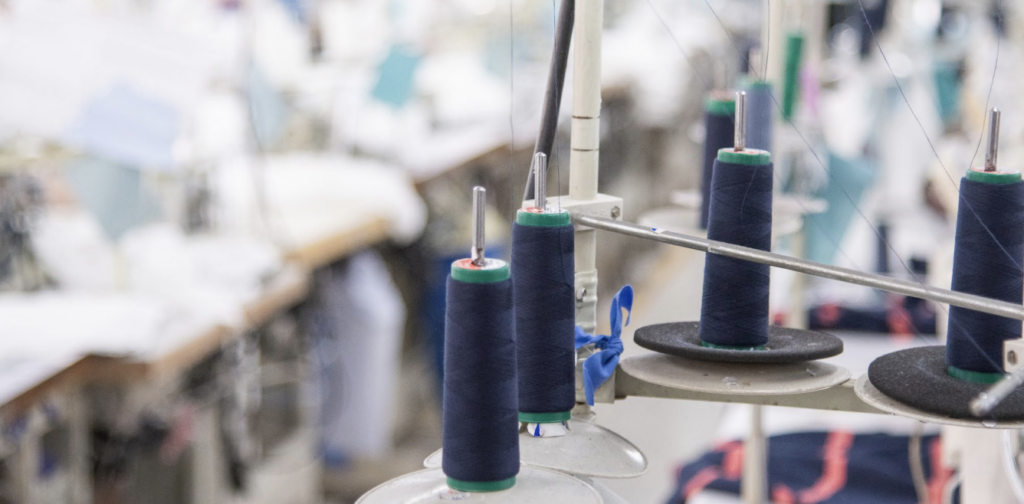
TAL Apparel
SAC: Why are manufacturers interested in the SAC?
D.L.: As a manufacturer, we don’t participate in many multi-stakeholder initiatives because we’re a small team, and there are a lot of multi-stakeholder initiatives.
There are two reasons. Even right at the outset, the SAC’s approach to driving change was impressive. On the technical side, even 12 or 14 years ago, they introduced the idea of facility, environmental performance, product performance, and brand performance. There are multi-dimensions of sustainability, and this is a technical aspect that was pretty comprehensive at the time. And then the second reason is they involve partners across the supply chain. Manufacturers are actually at those tables. There are manufacturers talking about how to make the change.
A lot of multi-stakeholder initiatives are usually initiated by brands and retailers. Manufacturers are told to do something, or rarely consulted. A lot of the social and environmental issues are in the plant, so it’s always good to involve the people doing the change in the discussion about change.
We call this an equal partnership principle which has been instilled in SAC from the beginning, and that’s why you see a third of the board comprises brands and retailers, a third is manufacturers, and a third is affiliates. It’s in the governance model. That’s why it’s made so much progress and why it appeals to manufacturers to be part of this coalition.
SAC: How can the SAC, governments, NGOs, etc., support manufacturers more?
D.L.: For climate change, or even for social change, we do need a lot of players. NGOs, pressure groups, and coalitions like the SAC, to help bring people together and bring awareness to the issues.
For me, regulation, in particular on the environmental side, is one of the last levers for change in an industry or in a society, not just our industry but for many industries.
With regulation coming in, governments are beginning to put a price on decarbonization or forced labor. I think it’s a bit unfortunate that the private sector can’t do it by themselves but the private sector and pressure groups can get things going. That’s how big the change is, and not just for our industry. COP29, the United Nations, everyone has to get involved in this particular change.
SAC: What is essential in driving lasting change?
D.L.: A lot of work. The crux of one of the major problems, or the elephant in the room, is who is paying for it? The economic question has to be addressed somehow by someone. And progressive manufacturers may know this will just be the entry ticket to continue to play in this area.
But unfortunately, not everyone in the industry thinks like that. Some people think, “Maybe I can still be a little bit slower on this journey and still get away with it.”This doesn’t just apply to manufacturing, brands and retailers have the same issue, and in the end it ties to the consumer, as well.
If consumers aren’t paying with their pocket, buying or preferring brands that are sustainable, then it drives the behaviors of the brands. If a consumer doesn’t demand it or only certain section demands it, then it’s really not enough.
SAC: Who is involved in this?
D.L.: Now, to get something done. If you map out decarbonization, most of the footprint is actually in the fabric mill. So the fabric mill can make all the changes and can phase out coal if they want, but all that comes with a cost. It’s very simple. They may have just installed some machine that is coal based, how do they transition out of it?
At the end of the day, it is a cost-related issue. It requires some time commitment from the garment manufacturer, and the brands collectively agreeing to a long-term agreement because we’re still in a market economy. Some commitment of orders or long-term commercial agreement would help them to make that capital investment for change. If there is government or foundation funding that helps drive that – great. The industry is big, so you can’t only rely on philanthropic funding for that change. It’s really a combination of everything.
The financial market is also going through a sea change where they have to support the transition, as well. That’s just the commercial side, the other side is linked to the country, or the government of a particular country. So progressive brands, retailers or manufacturers can only progress so far. In Vietnam, for example, where we are based, even if we put solar panels on top of all my roofs, I will not hit my science-based target. It has to rely on off-site solar. And for off-site solar, the regulations are not clear. It depends on the Vietnamese government to allow a commercial entity to come in to set up off-site solar to basically decarbonize the grid. The decarbonization of the grid that we rely on is also part of the journey and that shows the country-level politics.
SAC: What is the single most important issue dividing the industry?
D.L.: It’s really, collectively, to have a mindset that we can do it. You just heard my story, it is multi-dimensional. It’s not just the brand committing to a manufacturer and the fabric mill; it’s the consumer, it’s the country you’re operating in, and it’s the wider energy transition. The whole thing is quite complex. We can work on the apparel-specific stuff: sustainable fibers, recycling, circular fashion, circular economy, but 2030 is only six years away, right? Six years can go by very fast.
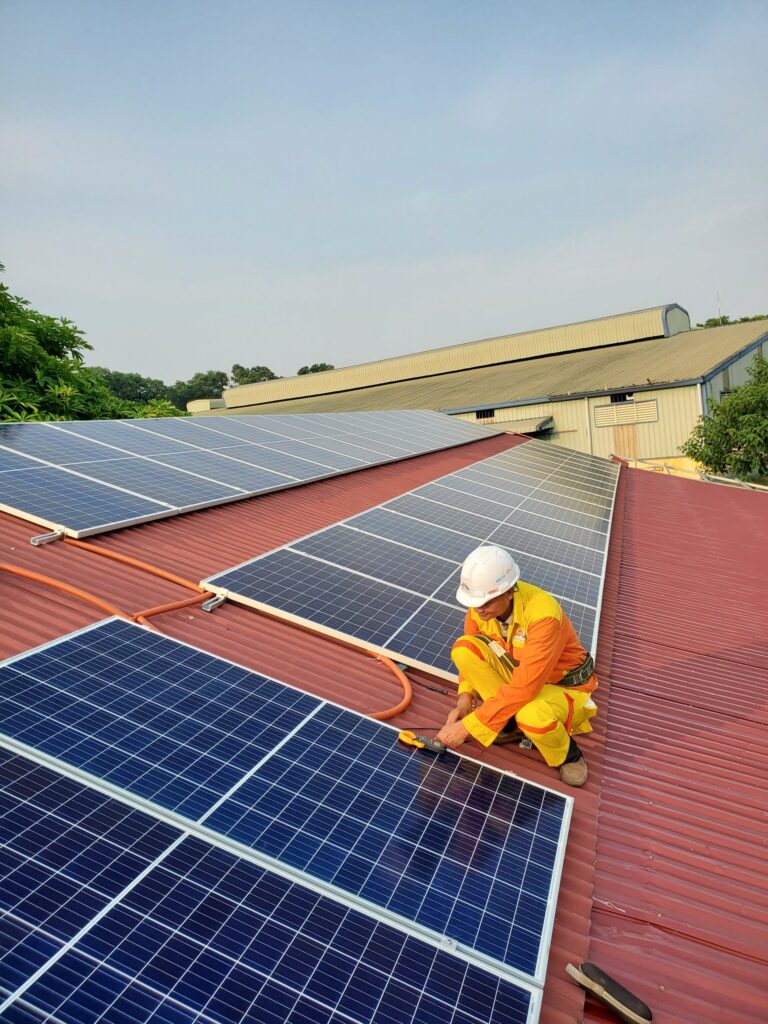
Joyce Tsoi, SAC director of Collective Action, co-hosted an in-person and virtual meetings in Vietnam and Cambodia to kick off the SAC x Project Development Programme (PDP), which aims to develop and scale rooftop solar photovoltaic project(s) to manufacturing facilities in Vietnam and Cambodia. Implemented by Deutsche Gesellschaft für Internationale Zusammenarbeit (GIZ) GmbH, the Project Development Programme (PDP) is an integral part of the German Energy Solutions Initiative. Coordinated and financed by the German Federal Ministry for Economic Affairs and Climate Action (BMWK) it aims to globalise German and European technologies and expertise in climate-friendly energy solutions. The PDP combines development cooperation with private-sector engagement to foster partnerships between local businesses and trusted providers of climate-friendly energy solutions, creating mutually beneficial outcomes and advancing the energy transition in its cooperation countries. Simultaneously, German and European providers benefit by easing their market entry into developing and emerging countries.
In Vietnam, the meeting also included a presentation from Eunice Doan, energy advisor and Country Representative of PDP Vietnam, and Lucia Hoang, regional manager of CSR Southeast Asia for Bureau Veritas, a world leader in laboratory testing, inspection, and assessment services. In Cambodia, presenters included Vabotra Chea, Technical Advisor and Country Representative of PDP Cambodia, and Rijan Shrestha, Technical Advisor and Country Manager of PDP Cambodia.
At both meetings, Tsoi shared information about the SAC’s Collective Action team, which oversees the development of its Decarbonization Program in support of the organization’s goals to achieve a 45 percent greenhouse gas (GHG) emission reduction in line with science-based targets (SBTs) by 2030 — and to zero by 2050. The SAC launched the Decarbonization Program in 2022 and integrated SBTs into SAC’s membership requirements in 2023, with over 50 percent of members having taken this action to date. “We believe that this is the most credible and ambitious approach, backed by the latest climate science,” Tsoi said. “SBTs have become fundamental expectations for companies globally in multiple industries and we want to enable our industry towards a low carbon transition by shifting from heavily fossil fuels use to adopting renewables or low carbon sources.
To achieve these goals, the SAC partnered with Textile Exchange and Zero Discharge of Hazardous Chemicals (ZDHC) to form the Apparel Impact Institute (Aii), creating a connected, end-to-end path to action for the entire apparel and footwear industry. The Collective Action team is committed to activate the SAC’s ecosystem for action and announced the launch of the Manufacturer Climate Action Program (MCAP) in September of this year. Designed in collaboration with NIKE and Target Corporation, the MCAP is a critical component of the SAC’s Decarbonization Program efforts to catalyze support and drive the sector toward ambitious yet necessary CO2 emissions reductions. Tsoi also shared the four key elements that form the core of MCAP, empowering manufacturers to define their scope 1 and 2 science-aligned targets, immediately take critical action to reduce their direct and indirect emissions and improve operational efficiency in order to advance industry goals.
During the Vietnam meeting, Tsoi used data accessed through the SAC’s Higg Facility Environmental Module tool in order to break down the mix of energy sources at manufacturing sites both globally and in Vietnam; the use case illuminated the sector’s dependence on fossil fuels. Over 80% of energy usage in 1253 facilities in Vietnam are from fossil fuels. Only 12.4% of energy comes from renewable energy sources. She also shared data on renewable energy adoption around the globe and was able to show Vietnam is a progressive country to increase its renewable energy capacity to sustain the growth of its industries. Following Tsoi’s presentation, Hoang shared the service offerings of Bureau Veritas Vietnam, which can support manufacturers in conducting life cycle assessments (LCAs), performing energy diagnosis services and consulting for GHG calculation and setting SBTs. Doan then explained the support and services offered to facilities by PDP, which guides facilities through the development process of solar PV technology and the selection of system size; service provider, equipment, and best investment scenario. These include technical evaluation, investment appraisal development, solar power implementation, and introduction to financing opportunities with preferential loan interest rates.
At the Cambodia meeting, Vabotra explained that with an average daily solar radiation of 5 kWh/m2 and average sunshine of 8 hours per day, Cambodia is one of the Southeast Asia countries that has high solar potential. He also discussed the regulatory landscape in terms of the history of Cambodia’s solar development, options to deploy renewables based on the Ministry of Mines and Energy (MME)’s updated principles of permitting the use of rooftop solar power. Rijan followed with an explanation of how the PDP team can support manufacturers in technical evaluation, investment proposals, and project implementation.
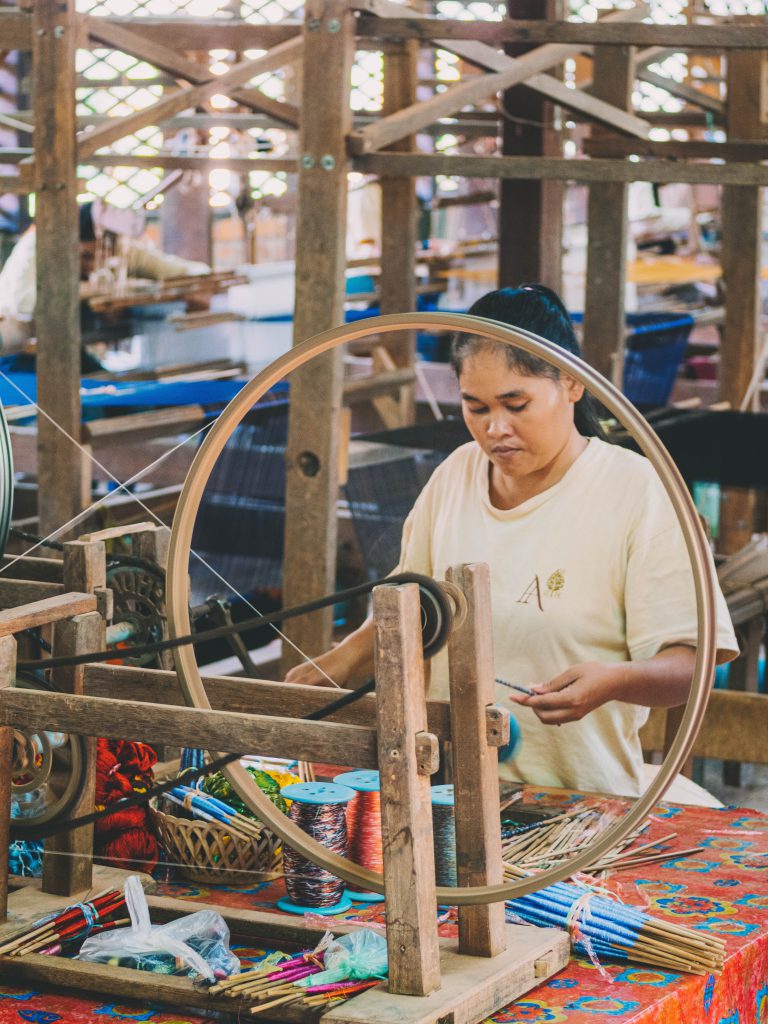
The Sustainable Apparel Coalition hosted a series of webinars to introduce the Manufacturer Climate Action Program (MCAP) to members located in Asia, North, Central, and South America (AMER) and Europe, the Middle East, and Africa (EMEA). The focus was to introduce MCAP as an integral part of SAC Decarbonization Program for SAC members and non-members alike, with a primary objective to accelerate the adoption of science-aligned targets for Scope 1 and 2 emissions, as well as to highlight the SAC’s strategic partnership with Aii’s Carbon Leadership Program (CLP).
Joyce Tsoi, SAC director of Collective Action, APAC, hosted the webinar, and introduced Ringo Yu, the new MCAP manager. Presenters also included Andres Bragagnini, manager of stakeholder engagement and Tamara Wulf, vice president of programs at the Apparel Impact Institute (Aii) and member of the apparel alliance, which the SAC formed in partnership with Textile Exchange and Zero Discharge of Hazardous Chemicals (ZDHC) to create a connected, end-to-end path to action for the entire apparel and footwear industry.
Yu shared information about the SAC’s Collective Action team, which oversees the development of its Decarbonization Program in support of the organization’s goals to achieve a 45 percent greenhouse gas (GHG) emission reduction in line with science-based targets (SBTs) by 2030 — and to zero by 2050. The SAC launched the Decarbonization Program in 2022 and integrated SBTs into SAC’s membership requirements in 2023, with over 50 percent of members having taken this action to date.
In September of this year, the SAC announced the launch of the Manufacturer Climate Action Program (MCAP). Designed in collaboration with NIKE and Target Corporation, the MCAP is a critical component of the SAC’s Decarbonization Program, designed to catalyze support and drive the sector toward ambitious yet necessary CO2 emissions reductions.
Tsoi shared the four key elements that form the core of MCAP, empowering manufacturers to take critical action to set science-aligned targets, reduce emissions and improve operational efficiency in order to advance industry goals. Then Bragagnini and Wulf detailed Aii’s Carbon Leadership Program, which can help manufacturers develop and implement a factory-level implementation plan by using Aii’s factory-level carbon toolkit, impact measurement, and validation to achieve their carbon reduction targets. They also shared details of Aii’s program portfolio. The portfolio covers a range of impact programs focused on achieving actual CO2e reductions through energy efficiency and the transition to renewable energy and away from fossil fuels. Finally, Tsoi encouraged SAC brands and manufacturer members to sign up and participate in MCAP from Q1 2024, and Aii invited the factories to participate in their programming.
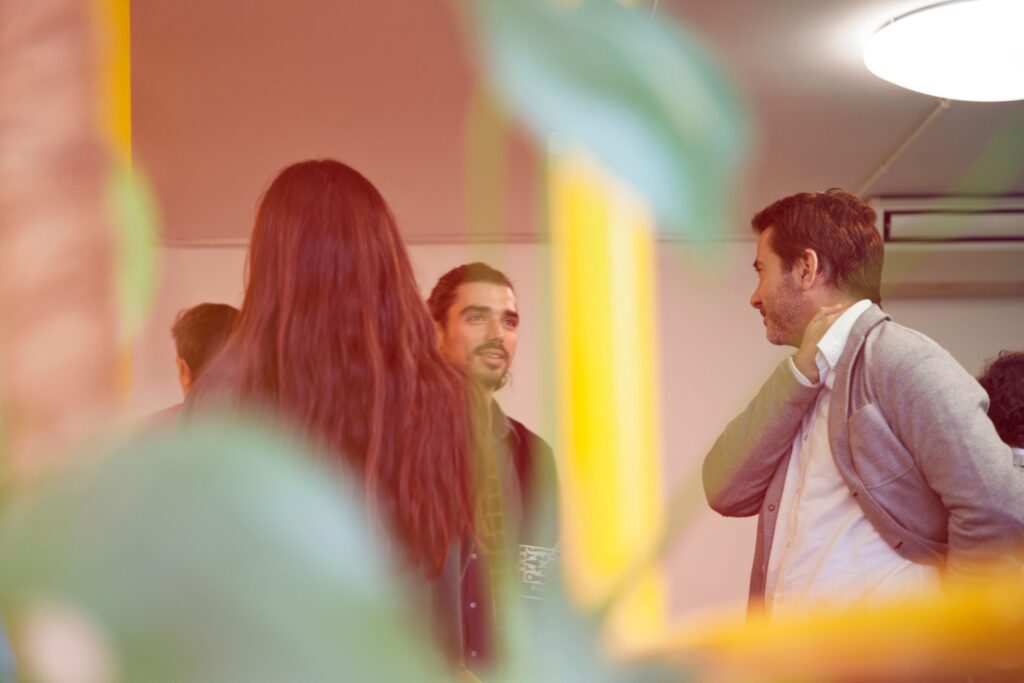
Kaley Roshitsh, SAC editorial director, attended the Sourcing Journal Fall Summit for a deep dive into sourcing, as the pinnacle holiday sales season approaches. The event convened executives across sustainability disciplines for sessions on the politics of trade, managing volatility in supply chains, benchmarking and scaling circularity while securing garment provenance, among others.
Circularity Definition “Disconnect”
At the conference, presentations underscored the fact that circularity is still top of mind – but circularity awareness is lagging despite perceived momentum, according to a 2023 circularity survey from Cotton Incorporated and Sourcing Journal. Melissa Bastos, director of corporate strategy and insights at Cotton Inc., reported findings of an “industry disconnect” and “a lot of confusion” around circular fashion. Per the survey, some 55 percent of consumer respondents were “unsure” of circularity’s meaning yet 40 percent were also “interested” in repair, resale and circular clothing avenues.
Meanwhile, 84 percent of industry executives said circularity influences design choices, and 69 percent reported interest in donating old products to be upcycled into housing insulation – the objective of Cotton Inc.’s “Blue Jeans Go Green” circularity program. Cotton Inc., along with Better Cotton, Cotton Connect, and the U.S. Cotton Trust Protocol are members of the Sustainable Apparel Coalition.
Manufacturer-First Focus
Manufacturing challenges were also a hot topic. “There is a gap in the market between what is demanded and what is required,” said Ebru Debbag, executive director-global sales and marketing at Soorty Enterprises Pvt. Ltd., in a session on supply chain volatility. She called for a stronger leadership proposition to prioritize suppliers in the decarbonization journey. According to Debbag, the company set their science-based emissions target of 54 percent, and aligned it with a transition to organic cotton.
Throughout the day, panelists agreed that suppliers are challenged by the costs of decarbonization. “We can’t go green if we’re in the red,” said Jasmin Malik Chua, sourcing and labor editor at Sourcing Journal, quoting a separate conversation with a manufacturer source.
Compliance, Provenance of Growing Concern
At a panel on compliance, speakers agreed that transparency is paramount to sustainable fashion brands. “The amount of visibility that is expected is only increasing,” said Marissa Brock, director, marketing and policy at Sourcemap, who was joined by executive panelists from Supima, Oritain and Alice & Olivia. Buxton Midyette, vice president marketing and promotions at Supima, said tracing Supima fibers, and fibers generally, is a “longstanding challenge,” and not one without its costs. Supima depends on 300 family farms in the U.S. for their fiber, and all hold a vested interest in identifying and tracing their cotton fibers in depth.
Ben Tomkins, vice president of retail sales at Oritain, added there is a “superficial level of compliance on supplier declarations,” which highlights the need for alignment at the ground level so suppliers aren’t stuck with duplicate audits.
In a separate conversation about textile recycling, Bryan Timm, Recover’s chief strategy officer, explained the company’s ongoing partnership with Oritain to identify cotton waste streams. “[The] Holy grail is to recycle the clothes you’re wearing, [and the] only way to do that is design with circularity,” Timm said. He also noted that the policy gaps around circular fashion are multifold but relevant to both Democrat and Republican lawmakers, who see the U.S. Uyghur Forced Labor Prevention Act (UFLPA) as “100 percent bipartisan.” However, he emphasized, “as a supplier, you have to be responsible for what happens in your supply chain.”

Joyce Tsoi, SAC’s Director of Collective Action Programs, participated in a conversation on “Making Carbon Finance Projects Work for Farmers” at the recent Better Cotton Conference. In addition to Tsoi, speakers included Maria Kjaer, Sustainable Livelihoods Manager for Better Cotton, Amelia Sidumo, Senior Regional Coordinator for Better Cotton, and Thomas Blackburn, Head of Business Development & Partnerships at SustainCERT.
At the conference, participants discussed the potential of carbon finance projects in the agricultural sector, with a specific focus on cotton production and how the industry can collaborate with farmers on successful projects.
Cotton producers face critical challenges related to climate change, including impacted germination and yield, deteriorating quality, and increased labor costs — to name a few. Because cotton farming communities can vary greatly in size and most reflect an extensive network of cooperatives, associations, and agribusinesses, organization of coordinated responses to these challenges can also be difficult.
However, collective action through data-backed solutions such as carbon financing can help build more resilient cotton farming communities and mitigate potential future damage to farming systems posed by extreme weather events such as droughts and floods.
To make these projects work, speakers explained, stakeholders must leverage expertise and data, as well as direct or indirect relationships with farming communities, to inform decision making on purchasing and investments.
Speakers highlighted the need to move quickly on smart legislation, rather than delay in anticipation of a definitive data set. They also defined the need for traceability and verifiable data when setting climate mitigation targets and GHG accounting to meet regulatory compliance requirements, while acknowledging the complexity of communicating with consumers.
They discussed how the industry can collaborate on collective action with workers, such as developing insurance policies for climate adaptation, engaging the technology sector on improved mechanization for intercropping, improving conventional production, or supporting a just transition to organic and regenerative farming methods. Sharing costs for accessing and sharing data could involve roles for capital markets and governments.
Solutions raised included alternative irrigation systems, solar energy, and circular innovations to reduce carbon emissions, all of which have the potential to reduce overall costs, diversify incomes, and unlock access to premium markets. Finally, the speakers highlighted the potential impact on worker wellbeing, as well as ways that these projects could be designed to respect communities, such as trainings in local languages, technical capacity building, and including female workers.
The conference was well facilitated, with good Global South representation and room for diverse angles on solutions — such as analysis of whether and to what extent decreased production might be considered alongside climate adaptive practices. Speakers agreed that the need for primary data was paramount, and that traceability and impact measurement is critical in developing solutions. They were reminded to continually look outside of specific industries, learn from each other’s experiences, and share progress collectively to inspire others to take action.